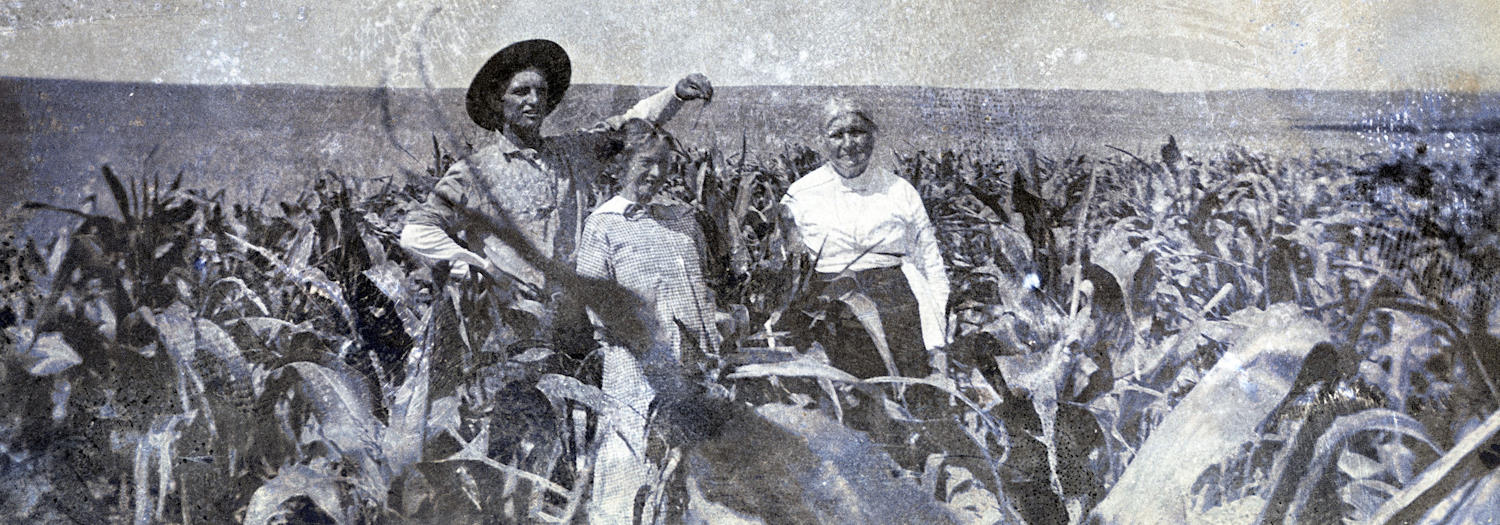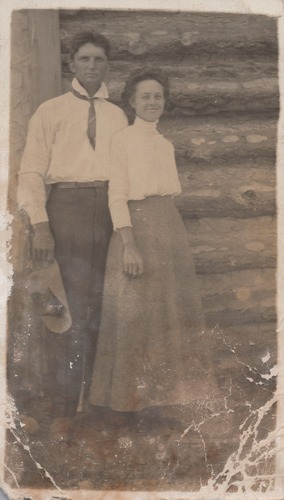In May, 1910, Kate Rayner, along with her sister May, her brother Lee, and parents Mr. and Mrs. H. L. Rayner, arrived from Viroqua, Wisconsin in Miles City. The move was made at the behest of Mrs. Rayner who felt compelled by the urge to farm, being of farmer stock, to homestead. They each filed on land on the divide between the Powder River and the Mizpah. Their 87 year old grandmother, Mahala Rayner, also filed. She rode out from Miles City sitting in a rocking chair on top of a load of furniture. Cabins were built on the land. Rayner and his son built 10 by 12 cabins on the girls' claims. They were made out of logs brought down from the pine hills near what is now Broadus. Glass was used in the windows and the homes were heated with wood brought down from the hills. The girls still remember the rattlesnake they found in the cabin the first night they moved in.
 Ralph and Kate Amsden and Unknown woman
Ralph and Kate Amsden and Unknown woman
The Bob Rices were near neighbors. Gilmores, Hudsons and Coons lived on the Mizpah. Henry Boyes and Ed Gring lived toward the river. Dursts and other folks lived in the vicinity. Many new people kept moving in and settling so that now it is sometimes difficult to remember who was there. News, of course, was mostly by word of mouth. In the fall of 1910, a man was found buried underneath the floor of his cabin on Pilgrim Creek. A young fellow who had been staying with him disappeared with horse and saddle. Kate remembers shivering as she rode horseback past the lonely cabin, mute witness to one of the many unsolved crimes. Unsolved because there just wasn't that much law free to ferret out the criminal and the settlers were far too busy taming the land.
 Ralph and Kate Rayner Amsden.
Ralph and Kate Rayner Amsden.
The Rayner girls both taught in schools in the county which was all Custer County at the time. In October 1912 , Kate Rayner married Ralph Amsden, of Groton, South Dakota in Miles City. A year later May married Frank Watters. The two couples worked together to build new, larger homes.
The Amsdens built a 16x32 log home with logs from the pine hills. Ralph hand-planed all the boards for the floor.
The Amsdens had nine children, Art, Rachel, Ralph, Guy, Harrold, Bill and Lyman. Five of the boys were in service in World War II.